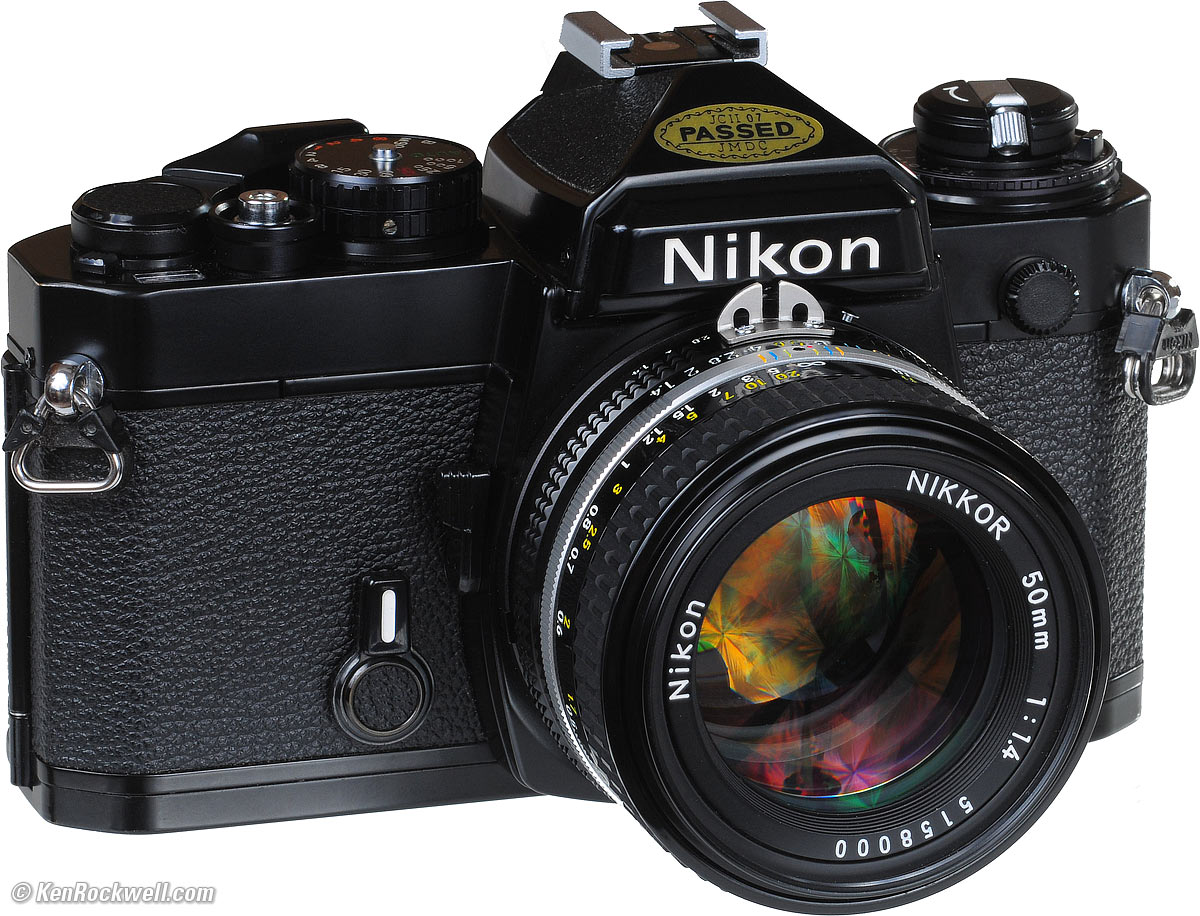Home Donate New Search Gallery Reviews How-To Books Links Workshops About Contact
Nikon
FE, FE-2, FM, FM-2,
FM-2n and FM3a
Nikon FE (uses two A76, S76, SR44, LR44, AG13 or similar button-cell watch batteries) and 50mm f/1.4 AI-s. You can get all you want at this link to them at eBay (see How to Win at eBay). This free website's biggest source of support is when you use that and these links when you get anything, regardless of the country in which you live. Thanks! Ken.
April 2024, Hot April 2019 Better Pictures Nikon Reviews Nikon Lenses Nikon Flash All Reviews
Nikon FE and FM Family Comparison Chart 18 March 2010
FM3a Review March, 2010.
Nikon FE review 01 October 2008.
Introduction
|
|
All these great cameras are very similar. Most take the same MD-12 motor drive and backs and they are all excellent professional 35mm cameras.
The FM and FE were introduced in the late 1970s as light weight, lower cost alternatives to the flagship F2 series.
The FM series is mechanical with manual exposure.
The FE series is electronic with automatic exposure control.
The FM3a is the newest of the series and unique in all the world as the only camera with both a fully mechanical manual shutter as well as an electronic shutter for automatic exposure. It is the very best of this series.
The FM, introduced in 1977, was a mechanical manual camera with a built in three LED + 0 - meter similar to the F2AS. (Most people consider the F2AS to be the very best serious 35mm camera ever made by anyone; it has the most sensitive meter ever made by Nikon, but I digress.) People didn't take the FM very seriously compared to the F2 back then. That was too bad because the only things the F2 did that made it different were features that no one uses anyway like interchangeable screens, interchangeable prisms and 250 exposure film backs. The FM has a 1-1,000 shutter and 1/125 flash sync.
The FE, introduced in 1978, was an electronically controlled aperture-priority automatic and manual exposure camera very similar to the FM. Unlike the FM it has interchangeable focusing screens. It takes the same backs and motor drives. It has two needles in the finder: one is the setting of the camera's shutter speed knob, and one is the exposure suggested by the light meter. This allows easy use in manual exposure setting: just match the needles. In the A setting then only the one needle indicates the shutter speed set by the camera. Marked shutter speeds go from 8 seconds to 1/1,000, flash sync is 1/125, and a mechanical speed of 1/90 also available for the paranoid who were worried about the batteries dying. A secret feature for night photography is that in A mode the FE will time perfect exposures as long as several MINUTES, and draw only 11mA from the button cells while doing it.
In 1982 the FM2 added a brighter screen and faster shutter speeds to 1/4000 and 1/200 to 1/250 flash sync. The trick to getting 1/250 sync is to set the shutter that way and ignore the blinking flash indicator. Pop Photo's 1st article about the FM2 was published in the April 1982 issue.
The FE-2 adds 1/4000 top speed, TTL flash and 1/250 sync. It was discontinued in 1987.
The FA of 1983 is from a somewhat different series as an electronic camera with the world's first evaluative or Matrix meter, as well as offering all P, S A and M exposure modes with all Nikon AI and AI-s manual-focus and AF and AF-D lenses The FA is Nikon's most advanced manual-focus camera, but not an FM or FE as covered here. Oddly the FA is the best and most advanced of all of these, but because it was so far ahead of its time it was misunderstood and was never as popular as it should have been. It is the best camera on this page.
The FM3a was introduced in February 2001 at the PMA show in Orlando, Florida. Here's data from the factory. It incredibly adds the automatic electronic exposure capabilities of the FE-2 to the mechanical FM-2n. There must be a catch somewhere, but as I understand it the FM3a offers both mechanical operation in manual and electronic operation in automatic.




